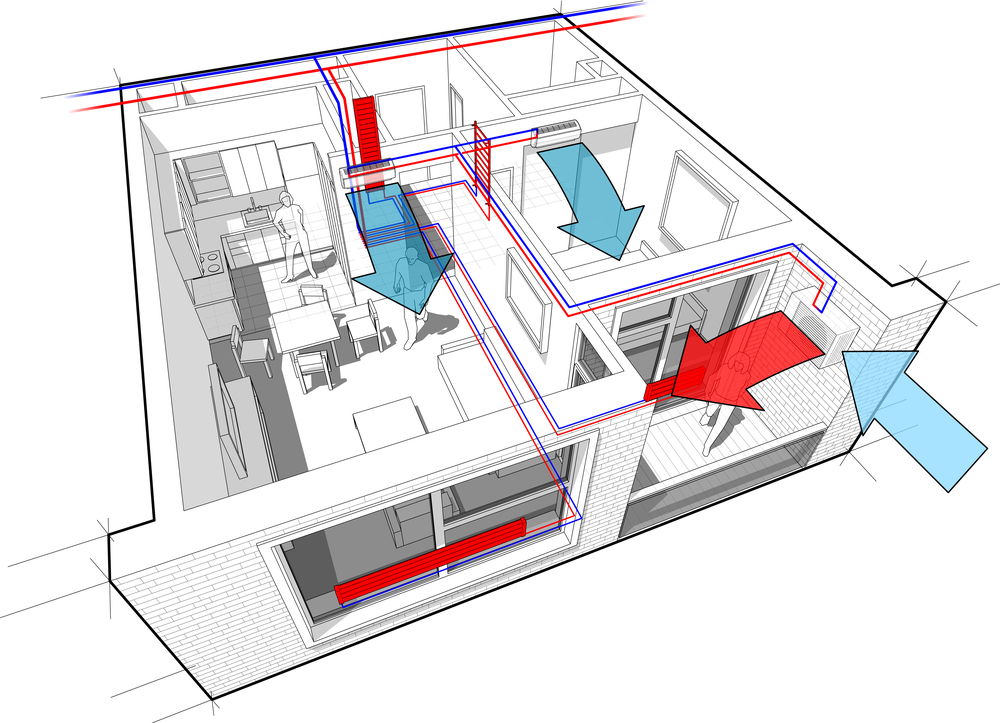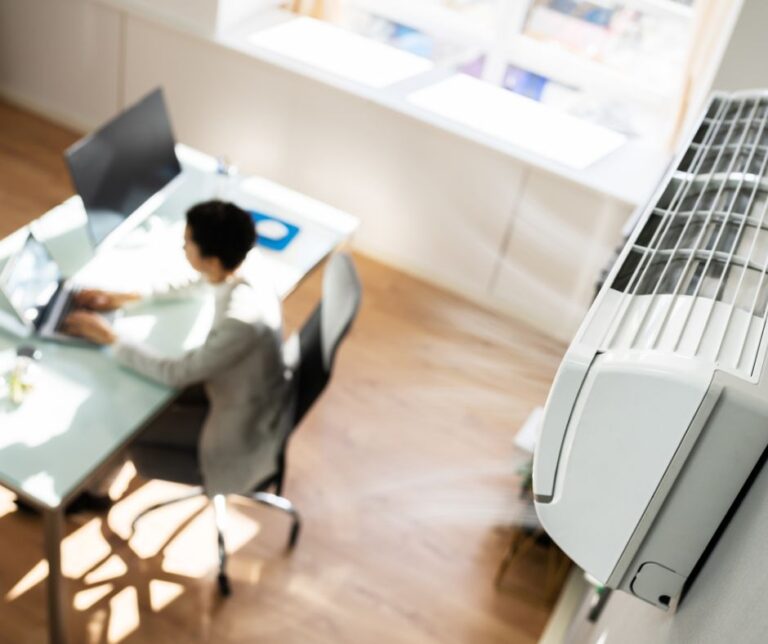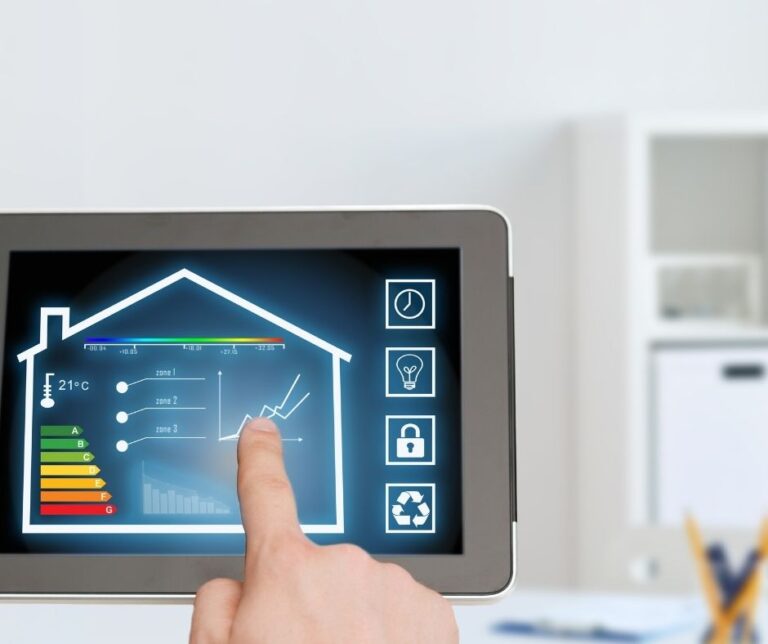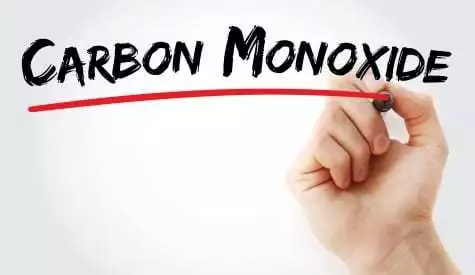Reverse Cycle Heating And Cooling
Installing a Reverse Cycle Air Conditioning
In the summer, the Melbourne heat can feel inescapable and our winters can be freezing!
Installing reverse cycle heating and cooling is the answer to deal with the Melbourne extremes.
At Beyond Heating and Cooling we have two reverse cycle options.
Both will keep you cool in summer and warm in winter.
Reverse Cycle Ducted Refrigerated System
What is it and how does it work?
A ducted air conditioning system cools and heats your entire home. The system consists of:
- An indoor unit, installed in ceiling cavity or below the floor
- An outdoor unit, that is mounted on the roof or in next to the home
- Air ducts that connect the indoor unit to air vents throughout the home
- Room sensors
A fully ducted reverse cycle air conditioner, is the ultimate solution for climate control.
The entire home can be controlled by a central thermostat and each room or zone can be set to suit every member in the family all year round.
The inside and outdoor units of the ducted reverse cycle air conditioning system are separate.
The indoor unit is often situated in the roof area and is connected to a number of home vents by ductwork. Then, all the rooms are circulated with cool air.
How does it cool and heat?
In the summer, the reverse cycle system operates by transferring heat from inside the home to the outside.
The refrigerant is then chilled and this what maintains the steady temperature.
In winter the opposite happens
As its name implies, the system has the ability to operate in reverse during the winter, using the refrigerant to warm the house while transferring the heat that is present in the air outside to inside the home.
If you want to cool your entire house, ducted reverse cycle systems are the ideal choice.
You can read more indepth about our refrigerated reverse cycle systems here

Split & Reverse Cycle Heating & Cooling
A split air conditioning system in your home can help you maintain a comfortable climate and is also a cost-effective way to stay cool. Reverse cycle air conditioners are doubly beneficial because they can be used to generate heat when temperatures take a cool turn.
A reverse cycle split air conditioner offers the best of both worlds: Heating and cooling.
When set to cool, the warm air in the home is drawn into the fan coil unit and thoroughly exhausted, allowing a cycle of cool air to flow back into the house.
When the heat pump is set to reverse mode, it can work in reverse, providing circulation of warm air on cold days.
What is the main difference between a ducted system and a split system?
The split system is designed to cool only one room. You will need to systems in each area or each room in the home to cool and heat.
On the other hand, the ducted system lets you cool more than one room within your home and is able to efficiently cool large areas.
If you’re looking to cool an entire house, then a ducted system might be a better option.
What is a reverse cycle split system?
A split air conditioner is so-called because half of the unit stays outside while the other half is installed inside your home. This system is prevalent because it offers the ability to cool different areas of the house while taking advantage of the cost-efficiency of a single unit.
The reverse cycle also allows you to use a heat pump to generate warm air when it’s cold outside.
There are different types of split systems that the team of experts at Beyond Heating and Cooling can help you choose:
Wall-mounted: This is the most common system. This unit is mounted on the wall, usually at the highest point in front of the ceiling—ideal for smaller houses or apartments.
Bulkhead: They are usually used in homes where there is not enough room for a standard wall-mounted unit or when there are concrete ceilings.
Ceiling cassette: It is mounted in the ceiling, ideal for properties where wall space is minimal.
Console: It can be installed on the floor or on the ceiling. It conveys a high airflow and is usually used in commercial environments
How does a Reverse Cycle Split System work?
Australia has one of the best climates globally, with long summers and comparatively mild winters. Reverse cycle air conditioners are designed specifically for Australian conditions. They keep your home cool and calm in the summer and provide warmth in the winter – all in one energy-efficient unit! But how do reverse cycle air conditioners work?
Let’s take a moment to explain.
When it comes to the Aussie choice of air conditioners in Melbourne, reverse cycle split systems are popular when installing air conditioning into an existing home.
- Lower initial cost
- Ease of installation – a split system can be installed in a single day
- Convenience and flexibility
The advantage of a reverse cycle split system is that it allows for individual temperature control, usually in conjunction with remote control, so you can stay comfortable year-round.
Why Reverse Cycle Split Air Conditioner?
- Easy installation process: reverse cycle split systems are among the most accessible air conditioners to install. They can be up and running the same day they are installed.
- Quiet operation: keep your home quiet; reverse cycle split systems operate quietly and efficiently at any time of the day or night.
- Stylish and modern: Many reverse cycle split systems are stylish and feature a modern design, so your home décor can also benefit from reverse cycle split systems.
- Dual heating and cooling solutions: Reverse cycle split systems offer the best of both worlds with dual heating and cooling solutions that keep you cool in the summer and warm in the winter.
- Easy to control indoor climate: reverse cycle split systems come with a user-friendly controller that lets you easily manage your new climate system with the touch of a finger.
The life expectancy of a Reverse Cycle Air Conditioner
Generally, you can expect a well-maintained air conditioner to last about 15 years. However, if your air conditioner needs expensive repairs and is older than ten years, replacing it would make more sense.
What is the right size reverse cycle split air conditioner I need?
When asking, “What size do I need?” the first thing to think about is the room size.
However, other elements also play a significant role in choosing the right size for your space.
The following 4 considerations will have the greatest impact on the size of the air conditioner you need.
1. Room size
Yes, size does matter. If an air conditioner that you have chosen is too big or too small, it will not only affect performance but also quickly show up on your electric bill. Beware – you won’t be satisfied. Choose a model with a kW output that is either just right or slightly higher than you need.
2. Noise
Some units can produce a tremendous amount of noise you won’t be happy about while working or sleeping. A loud outdoor unit can also annoy your neighbours.
Your local council may also have guidelines about where air conditioning units are and how close they are to boundary fences.
3. Insulation of the building
Insulation of the ceiling is a crucial factor for energy efficiency. It can significantly affect the size of the air conditioner you need.
What if you don’t have insulation?
If you don’t have roof insulation or it needs replacing, you should install it or upgrade it. This will help you save money on your electric bill in the long run and also allow you to buy a smaller, cheaper air conditioner.
4. Location
Where you live can significantly impact the size of the air conditioner you need.
You should also think about how your room’s windows are oriented. West or north-facing windows can let in a lot of summer heat. South-facing windows require less energy to cool the room.
And what about the ceiling height of the room?
Yes, floor area is important, but the rooms overall volume is the key to selecting the best heating and cooling solution. So a room with high ceilings will require more energy to cool or heat.
Looking for professional help?
Reverse Cycle Refrigerated Systems Using Solar
Can a reverse cycle refrigerated heating and cooling system be run on solar alone?
Beyond Heating and Cooling, Melbourne-based local company, is proud to help customers choose quality, affordable products for their heating and cooling needs.
Get in touch and we can discuss what the best heating and cooling system will be for your home and your budget








